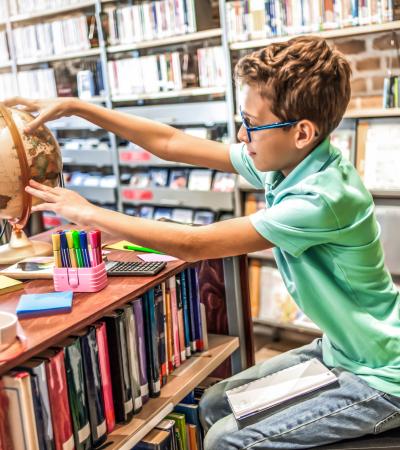Open educational resources (OER) are defined by OER Commons as “teaching, learning and research resources that reside in the public domain or have been released under an intellectual property license that permits their free use and re-purposing by others. OER include full courses, course materials, modules, textbooks, streaming videos, tests, software and any other tools, materials or techniques used to support access to knowledge.”

What makes a resource "open"?
When talking about open resources, it is generally accepted that there are five components that make an artifact an openly licensed artifact. They are known as the “5 Rs.” These five requirements are the right to retain, revise, remix, reuse and redistribute an item.
- Retain: Ability to make a copy or copies
- Revise: Modify, change, and improve
- Remix: Mix multiple resources together to create something new
- Reuse" The right to use the content in a range of ways
- Redistribute: Share with others
Advantages of OERs
In 2015, the U.S. Department of Education launched the #GoOpen Campaign. According to the Office of Educational Technology website, there are 20 #GoOpen states and over 100 districts that have signed onto the movement citing reasons such as cost savings, more up-to-date resources and the ability to customize and personalize learning objectives for students and faculty.
As we see it, the biggest advantage of utilizing open educational resources is that it helps to level the playing field and increases equity among our students, educators, schools, districts and states.
As curation experts, librarians are set to take a leadership role and assist in the shift of curating and incorporating more openly licensed materials into our practice. Modeling and providing programming in the curation of open resources in our libraries is a must.
In our libraries as we guide, teach and learn, librarians should be leveraging open educational resources in partnership with more traditional resources. This is the perfect mix of utilizing our amazing subscription resources along with openly licensed content.
OERs and programming
How do we start this programming shift to utilizing open educational resources?
To begin that work, it is important to provide information for educators and students on what makes an open educational resource. This should include teaching and learning about copyright, creative commons, public domain and the 5Rs that constitute openly licensed materials.
As a bonus, this programming directly connects to the newly revised AASL Standards for Learners, School Librarians, and School Libraries!
Simple, beginning programming ideas include:
- Creating a research guide for one class or content area
- Suggesting an openly licensed text, video, or assessment to an educator
- Attending a department meeting or professional learning community meeting and sharing an open educational platform
- Assisting students in curating openly licensed artifacts for a school project
The journey to adopting more openly licensed materials in our libraries, schools, and districts is not an easy one; it takes a lot of work, research, marketing and curation skills on the part of the librarian. However, in the long run, utilizing open tools and artifacts will benefit students, educators and you.
Next month, we’re going to blog about specific open educational resources you can use to assist with adoption in your school, district, or library.



